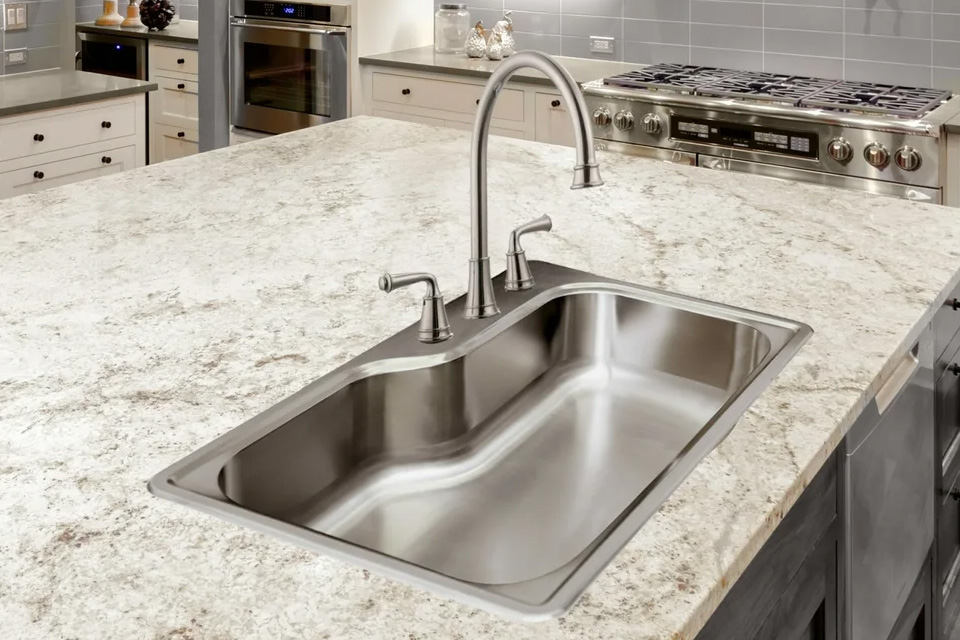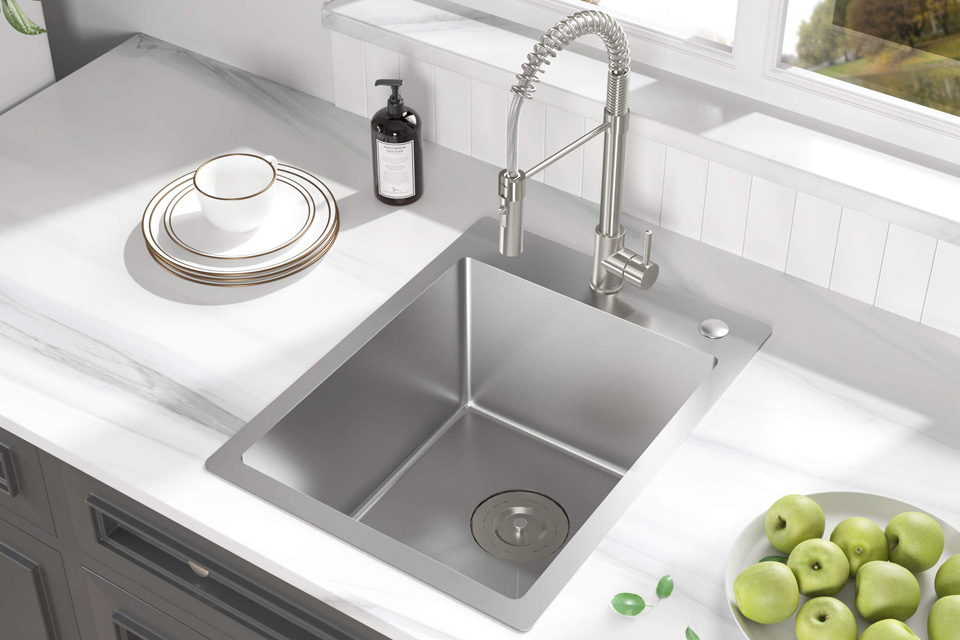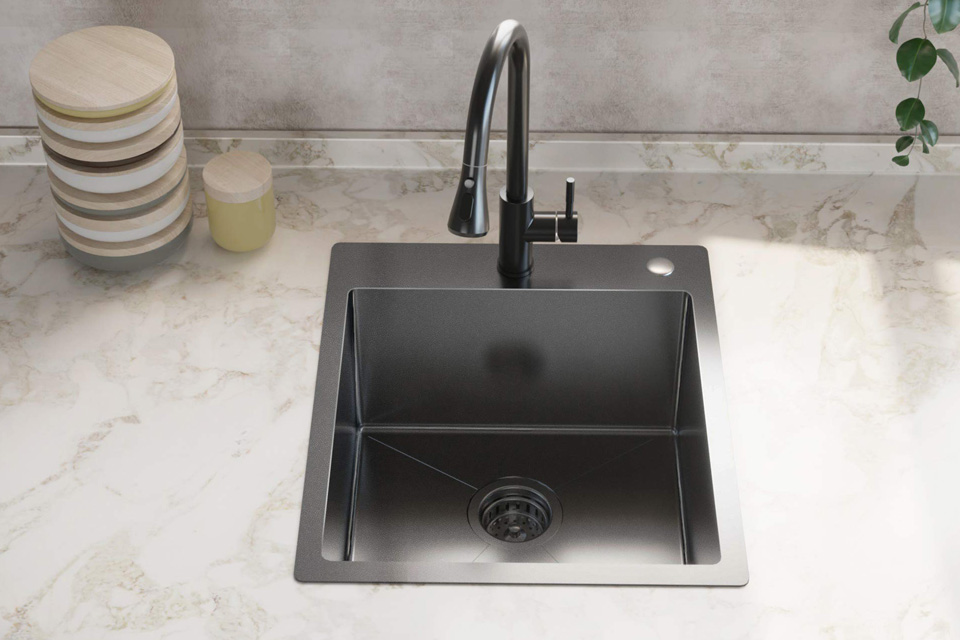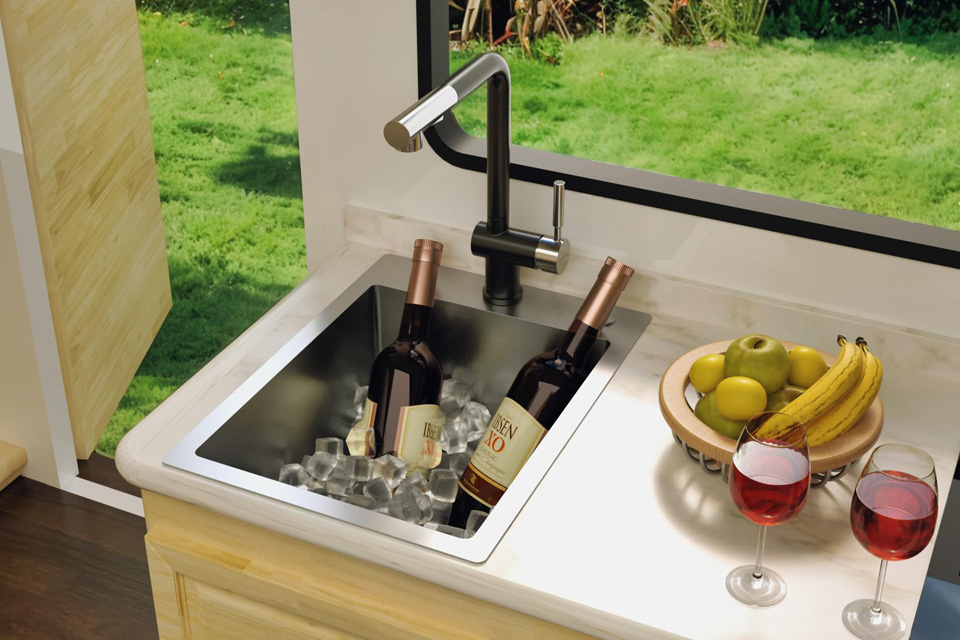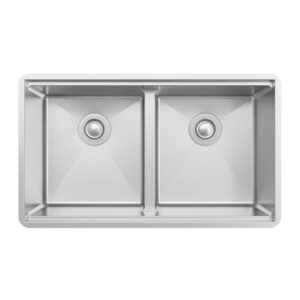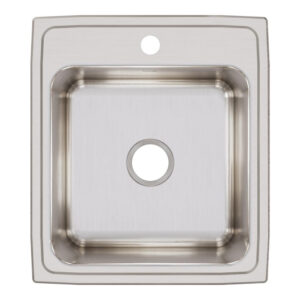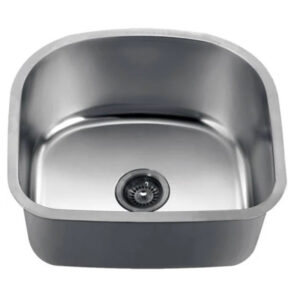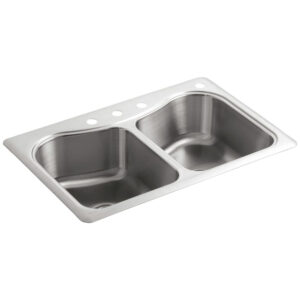
How to Clean Your Stainless Steel Sink Like a Pro
Table of Contents
This guide will walk you through everything you need to know about maintaining your stainless steel sink, from daily maintenance to tackling tough stains. With expert tips and practical advice, you’ll learn how to keep your sink in top condition, like a pro.
Why Is It Important to Keep Your Stainless Steel Sink Clean?
A stainless steel sink is a central feature in many kitchens, known for its durability, sleek appearance, and resistance to rust and stains. However, even the highest-quality stainless steel sinks require regular maintenance to keep them looking their best. A clean sink is not only visually appealing but also essential for maintaining a hygienic kitchen environment.
When you don’t clean your stainless steel sink regularly, it can quickly accumulate dirt, grime, and water spots, making it look dull and unattractive. Additionally, leftover food particles and water stains can lead to more severe issues, like bacterial growth or corrosion over time. Regular cleaning is key to preventing these problems and extending the life of your sink.
What Makes Stainless Steel Sinks So Popular?
Stainless steel sinks have long been a favorite choice in kitchens around the world, and for good reason. The material’s resilience to heat, stains, and rust makes it ideal for withstanding the daily demands of a busy kitchen. Understanding the qualities that make stainless steel so popular can help you appreciate why maintaining it is crucial.
Durability and Resistance
Stainless steel is incredibly durable and resistant to many of the challenges that other materials might face in a kitchen environment. Its non-porous surface doesn’t absorb liquids or odors, making it easier to clean and less likely to harbor bacteria.
Aesthetic Appeal
Stainless steel sinks offer a modern, sleek look that complements a wide range of kitchen styles. Whether you have a traditional or contemporary kitchen, a stainless steel sink can blend in seamlessly while adding a touch of sophistication.
What Supplies Do You Need to Clean Your Stainless Steel Sink?
To clean your stainless steel sink effectively, it’s important to have the right supplies on hand. While stainless steel is resilient, it’s still susceptible to scratches and damage if cleaned with harsh materials.
Must-Have Cleaning Supplies
- Baking soda: A natural and gentle abrasive that helps to clean without scratching.
- Microfiber cloth: Soft and non-abrasive, perfect for polishing and drying.
- Dish soap: Effective for removing grease and everyday dirt.
- White vinegar: Great for cutting through mineral deposits and adding shine.
- Bar Keepers Friend: A specialized cleaner that’s perfect for tackling tough stains and restoring shine.
What to Avoid
Avoid using steel wool, abrasive sponges, or harsh chemicals like bleach, which can scratch or damage the surface of your stainless steel sink. These materials can cause more harm than good, leaving your sink with permanent marks.
Daily Maintenance Tips to Keep Your Stainless Steel Sink Sparkling
Daily maintenance is key to keeping your stainless steel sink in pristine condition. With just a few simple habits, you can prevent water spots, stains, and scratches from taking hold.
Regular Rinsing
After each use, make it a habit to rinse your sink thoroughly with clean water. This helps remove food particles, soap residue, and any other debris that could lead to stains or buildup.
Drying After Use
Water spots are one of the most common issues with stainless steel sinks. To prevent these, dry your sink with a soft cloth after each use. This simple step helps to keep your sink looking clean and shiny.
How to Clean a Stainless Steel Sink with Baking Soda
Baking soda is a powerful yet gentle cleaner that’s perfect for maintaining the shine of your stainless steel sink. Here’s a step-by-step guide to using baking soda for a deep clean.
Step-by-Step Guide
- Rinse the Sink: Start by rinsing the sink with warm water to remove any loose debris.
- Apply Baking Soda: Sprinkle a generous amount of baking soda over the surface of the sink.
- Scrub Gently: Use a soft sponge or cloth to scrub the sink in circular motions. Focus on any stained or dirty areas.
- Rinse Thoroughly: Once you’ve scrubbed the entire sink, rinse away the baking soda with warm water.
- Dry the Sink: Finally, dry the sink with a microfiber cloth to prevent water spots.
Why Baking Soda?
Baking soda is a natural cleaner that’s tough on grime but gentle on your sink. It’s a safe, non-toxic alternative to harsher chemical cleaners and won’t leave any scratches on your stainless steel surface.
How to Remove Tough Stains and Water Spots from Your Sink
Even with regular maintenance, tough stains and water spots can sometimes appear. These can be particularly frustrating, but with the right approach, they can be removed without damaging your sink.
Removing Stubborn Stains
For tougher stains, such as those caused by coffee, tea, or food residue, you might need something a bit stronger than baking soda. A paste made from baking soda and water can be applied to the stain, left to sit for a few minutes, and then scrubbed gently with a soft cloth.
Dealing with Hard Water Stains
Hard water stains can be particularly stubborn. White vinegar is effective in breaking down these mineral deposits. Soak a cloth in vinegar and lay it over the affected area. Let it sit for about 15 minutes, then wipe away. For especially tough spots, you may need to repeat this process a few times.
What Mistakes Should You Avoid When Cleaning Your Stainless Steel Sink?
Cleaning a stainless steel sink might seem straightforward, but there are common mistakes that can lead to damage. Avoid these pitfalls to keep your sink in top condition.
Avoid Steel Wool and Abrasive Pads
Steel wool and abrasive pads can scratch the surface of your stainless steel sink, leaving it looking dull and worn. Always opt for non-abrasive materials like microfiber cloths or soft sponges.
Steer Clear of Bleach
Bleach and other harsh chemicals can cause discoloration and damage to stainless steel. Instead, use mild cleaners like dish soap, baking soda, or specialized stainless steel cleaners.
How to Use Bar Keepers Friend for a Professional Finish
Bar Keepers Friend is a trusted cleaner that’s particularly effective for stainless steel. It’s great for tackling tough stains and restoring the shine to your sink.
Why Use Bar Keepers Friend?
Bar Keepers Friend contains oxalic acid, which helps to remove rust, stains, and mineral deposits without scratching. It’s a favorite among professionals for giving stainless steel a like-new appearance.
Step-by-Step Cleaning
- Wet the Sink: Start by wetting the sink with water.
- Apply Bar Keepers Friend: Sprinkle the powder evenly over the surface.
- Scrub Gently: Using a damp cloth or sponge, scrub the sink in circular motions.
- Rinse Thoroughly: Rinse away the cleaner with warm water.
- Dry the Sink: Finish by drying the sink with a microfiber cloth to prevent water spots.
Long-Term Care: Tips to Keep Your Sink Looking New
Taking care of your stainless steel sink isn’t just about cleaning—it’s also about preventing damage and maintaining its appearance over time. Here are some tips for long-term care.
Preventing Scratches and Dents
To prevent scratches, avoid placing heavy pots and pans directly in the sink. Use a sink mat to protect the surface from dents and scratches.
Maintaining the Finish
To keep your sink looking new, regularly buff it with a soft cloth after cleaning. This helps maintain its shine and prevents dulling.
Frequently Asked Questions About Stainless Steel Sink Care
How Often Should I Clean My Stainless Steel Sink?
It’s best to clean your sink daily or after each use to prevent the buildup of stains and water spots. A deeper clean with baking soda or Bar Keepers Friend can be done weekly or as needed.
Can I Use Lemon Juice on My Stainless Steel Sink?
While lemon juice is great for cutting through grease, it’s acidic and can cause discoloration if left on stainless steel for too long. It’s best to rinse it off immediately if you choose to use it.
What Should I Do If My Sink Gets Scratched?
Small scratches can often be buffed out with a stainless steel cleaner and a soft cloth. For deeper scratches, consider consulting a professional.
By following these tips and guidelines, you can keep your stainless steel sink looking spotless and new for years to come. Regular maintenance, careful cleaning, and using the right products will ensure that your sink remains a beautiful and functional centerpiece in your kitchen.
Comments
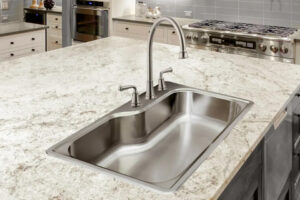
How to Clean Your Stainless Steel Sink Like a Pro
Keeping your stainless steel sink clean and sparkling not only enhances the overall look of your kitchen but also ensures long-term durability and hygiene.

A Complete Guide: How to Install a Farmhouse Sink
Installing a farmhouse sink is a fantastic way to transform your kitchen with both style and functionality. These iconic sinks, also known as apron-front sinks, have become increasingly popular due to their deep basins and elegant design.
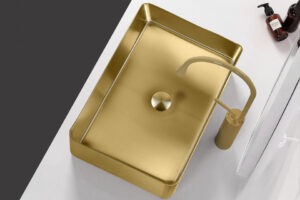
Choosing the Right Sink for Your Bathroom Remodel: A Complete Guide
When planning a bathroom remodel, one of the most important decisions you’ll make is choosing the right sink.
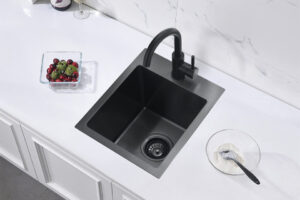
How to Unclog Your Kitchen Sink: The Ultimate Guide
Are you facing the frustrating problem of a clogged kitchen sink? Don’t worry, you’re not alone.
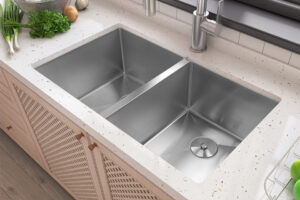
How to Seal Your Kitchen Sink to the Countertop: A Complete Guide
Sealing your kitchen sink to the countertop is a crucial step in ensuring a long-lasting, leak-free installation.
Tags
Related Blog
Learn the newest trends and common knowledge from our blog in stainless steel sinks business.

How to Unclog Your Kitchen Sink: The Ultimate Guide
Are you facing the frustrating problem of a clogged kitchen sink? Don’t worry, you’re not alone.
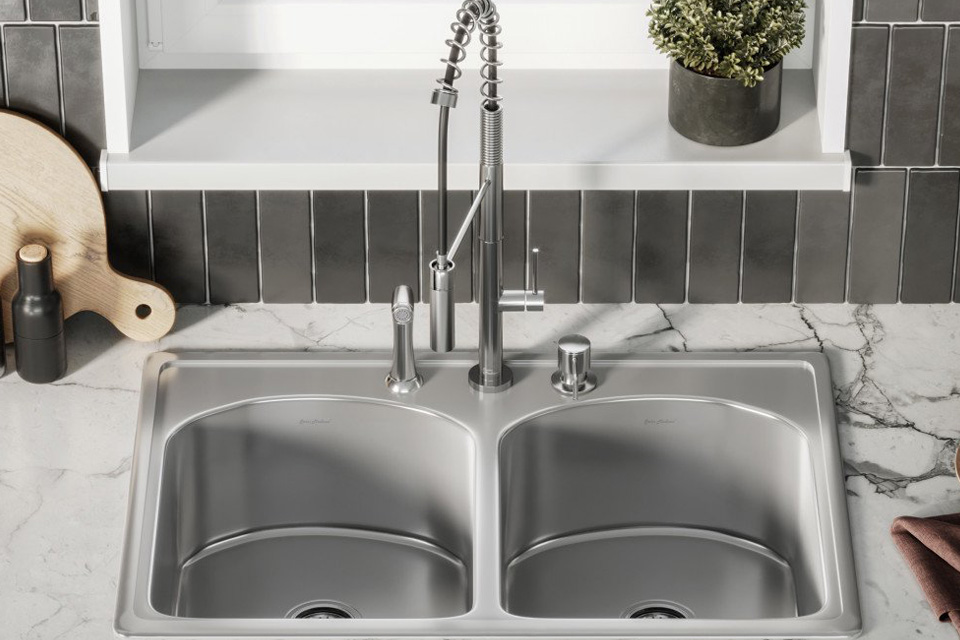
The Best Ways to How to Clean a Stainless Steel Sink
Keeping your stainless steel sink clean and shiny not only enhances the look of your kitchen but also prolongs the lifespan of your sink.
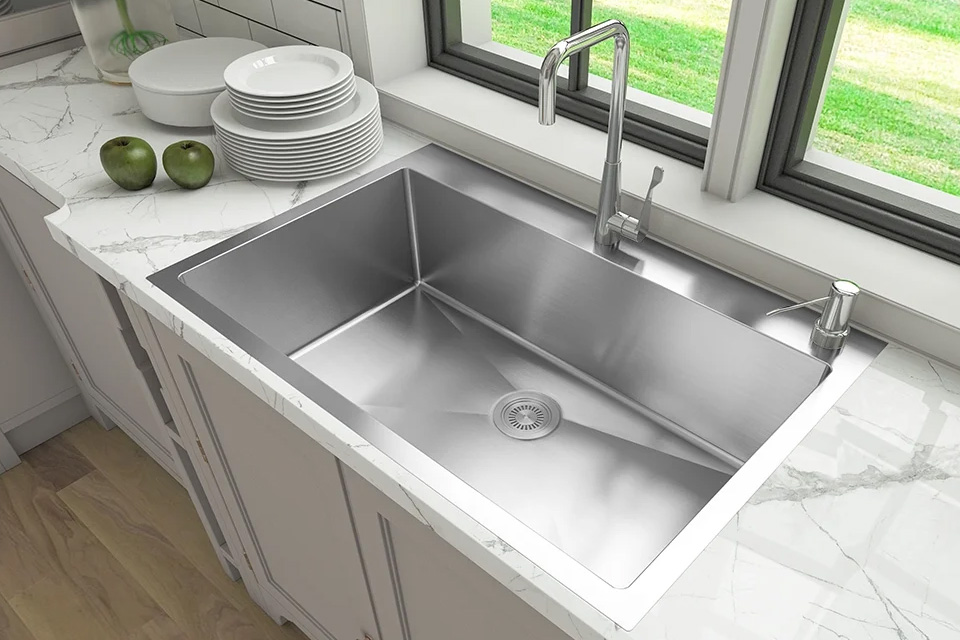
What Are The Advantages of Stainless Steel Kitchen Sinks
Stainless steel sinks are a popular choice for kitchens, known for their durability, ease of maintenance, and sleek design.

